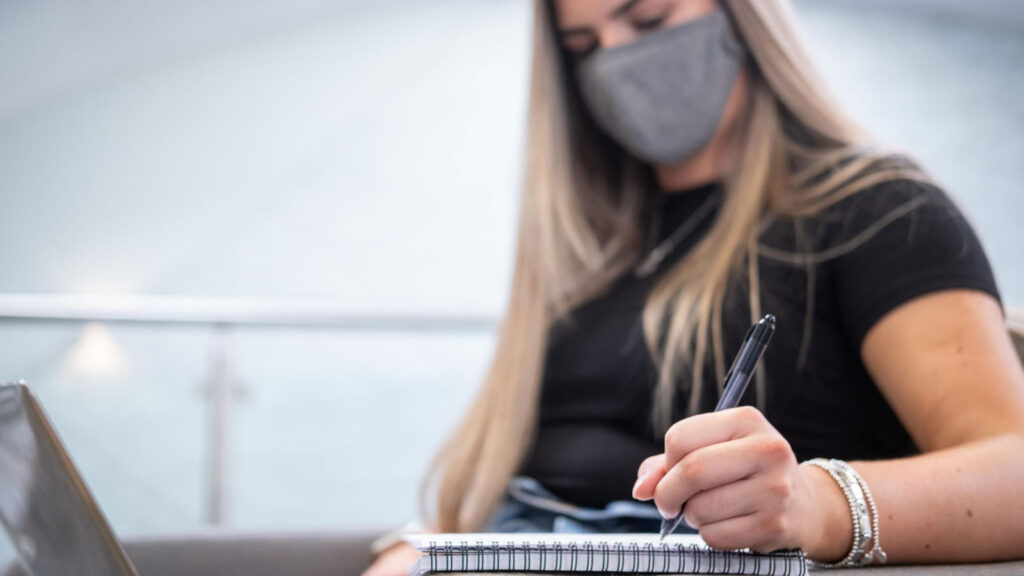PPE and me
As the year finally (!) draws to a close, looking forward is just as important as looking back at the events that have unfolded and effected every single one of us. It’s hard to talk about anything else other than the pandemic that is occurring at the moment, but in this blog post I hope to look at it from a slightly different angle and think about the important messages we can carry with us following such a tragedy.
I never pictured I’d be taking my second year exams, not in the tennis centre surrounded by hundreds of students, but in my dining room at home with my parents able to peer over my shoulder and ask me how it’s going. I can’t tell which is worse, but this is the least of all our worries at the moment as our already stretched national resources are being asked to do the impossible. The big talking point of course being PPE, and its severe lack of in many places that depend on it to protect those risking their lives.

PPE stands for personal protective equipment, which in the medical industry includes gloves, face masks, visors and full body gowns, among other more specialist kits. PPE is also applied to the other STEM subjects in our laboratory environments, whether it be a full white lab coat, goggles or steel toe capped boots. All of this equipment is designed with one key factor in mind: safety. The PPE shortage has sparked a number of conversations about it, such as where we get it from, how functional it is, and who it is designed for. As we’ve all come to realise just how important and life-saving this equipment is on a daily basis, we’ve realised the importance of opening up the conversation to criticise the PPE we use at the moment and how to better it.
One of the biggest criticisms is how PPE is almost always designed to fit the male body. A video posted by New Scientist features Caroline Criado-Perez criticising a number of industries for still lacking to provide equipment suited for women. If a piece of equipment doesn’t fit well, it is putting that individual at risk and breaches health and safety protocol. In the current situation, face masks that don’t fit will leave large gaps around the face and defeat the purpose. If a gown is too large, there is a risk of tripping or it getting caught on something causing it to rip and ruin the protective layer there to reduce the spread of the virus. This is dangerous in high risk areas such as hospitals or care homes, and women are at the greatest risk of all. The healthcare industry is 70% female so why are we still designing it for men?
I’ve personally experienced this in the labs at Loughborough, and is an issue that following the pandemic I’m hoping to push for a change. The lab coats they provide us in first year have a smallest size of XS, and although it claims to be unisex it only just fits my 5’ 4” frame. The biggest problem I’ve noticed is the sleeves are far too wide (I could fit two arms in it!) and leaves it hanging. Not only is this annoying, but it is prone to knock things over, to dip into chemicals or in extreme cases catch on fire. All of these put our safety at risk by having overhanging clothing that doesn’t fit to the body correctly. A better, more tailored fit to people with a smaller frame, i.e. women, would reduce these risks and help create the distinction that STEM is a subject for all genders. We’re not asking for designer coats perfectly made to our body, or to make it more ‘flattering’ as some may assume, we are simply asking for our safety to not be compromised by sticking to the same traditional sizing and styling used for the last decades.
Even though the STEM industry is doing well to improve the numbers of women joining, there are areas overlooked that need improving to ensure that it is a safe, welcoming environment for women to be a part of. Part of that is ensuring we have equipment suited to us the way men have equipment suited to them, so that we can all be protected and look after each other as we hope to improve the lives of others. Although the numbers are looking better year on year, the practicalities of welcoming women into science is still something not fully developed and the industry as a whole should aim to keep up with those permanent changes. The global pandemic is at the forefront of all of our minds, however, using these opportunities to make these realisations and have these conversations is vital to us moving forwards into a better, healed world.

About Katrina
“My name is Katrina Cranfield and I am the Women in Science Ambassador. I’m half British half Portuguese, and spent the last 7 years living in Hong Kong. I’ve now come to Loughborough to start my undergraduate degree in Chemistry, and as the Women in Science Ambassador I hope to evolve the way Loughborough welcomes women into STEM through my own student perspectives.”
Women in Science
Encouraging more young women to study science-related subjects